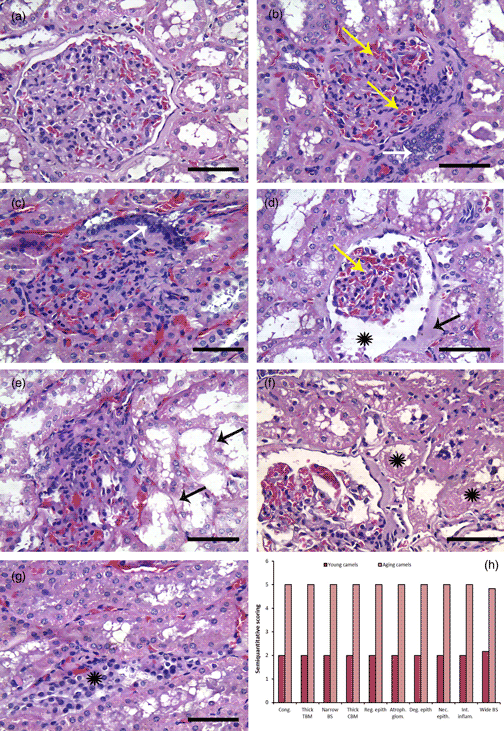Published online by Cambridge University Press: 10 March 2021

Renal aging is a progressive, physiological, and anatomical change that naturally occurs in all animal species. To date, no information is available concerning the aging-related structural and functional changes in camel kidneys. A total of 25 healthy male camels (14 aged 4–6 years and 11 aged 18–22 years) were included in this study. After the camels were slaughtered, samples were collected from all the camels’ kidneys and prepared for histopathological, immunohistochemical, and gene expression evaluations. The most striking observation was the significant decline in the immunohistochemical abundance of podocin and the significant upregulation of smoothening in the aging camels’ kidneys. However, the nonsignificant changes have reported for nephrin, calbindin, autophagy 5 (ATG5), aquaporin 1, and toll-like receptor 9. Furthermore, the mRNA expressions of sirtuin 1, superoxide dismutase 1, superoxide dismutase 2, peroxisome proliferator-activated receptor alpha, B-cell lymphoma 2 (Bcl-2), and erythropoietin were significantly decreased in the aging camels’ kidneys. While the significant upregulation of Bcl-2-associated X protein and the nonsignificant increase in ATG5 expression levels were reported in the aging camels’ kidneys. The present findings provide better understanding of the complex events and initiating factors of aging, allowing for the development of a future therapeutic strategy to preserve adequate renal function throughout life.